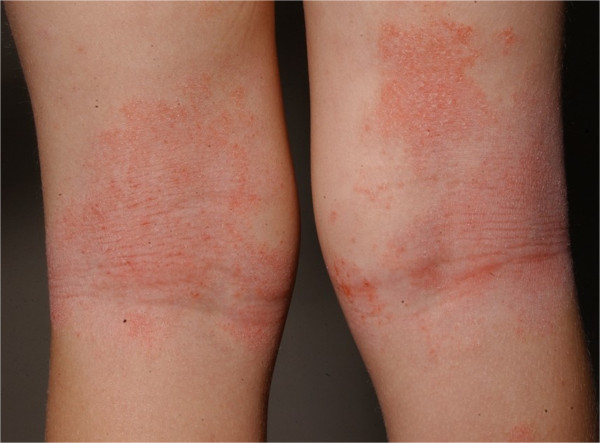Playlist
Show Playlist
Hide Playlist
Atopic Dermatitis (Eczema)
-
Slides Atopic Contact and Seborrheic Dermatitis.pdf
-
Reference List Dermatology.pdf
-
Download Lecture Overview
00:02 Atopic dermatitis is actually often referred to as "the itch that rashes," rather than the rash that itches, because oftentimes, patients report they feel itchy even before the lesions have occurred. And then once they start scratching, then they start to have this erythema, there's dry skin, it's severely pruritic. And over time, these erythematous papules and vesicles start to arrive, perhaps with even some exudates and crusting. 00:27 And over time, you'll get these dry, scaly, excoriated plaques with progressive lichenification. Eventually, we'll have lesions called lichen simplex Chronicus, which is LSC, which is essentially just this leathery skin from all this chronic itching over a long period of time. I mentioned those classic aspects of where you should look for it. And in adults, it may be more localized and again, lichenified, this lichen simplex Chronicus that I mentioned. 00:58 So, looking back at our case, I think we can safely say that our patient has a diagnosis of atopic dermatitis. 01:05 We're going to treat it by avoiding any triggers, and again, you can do some skin prick testing to try and figure out exactly what the nvironmental triggers are. It's really important to educate patients about preserving moisture. That means avoiding taking hot showers, don't scrub the moisture off your skin with a towel after getting out of the shower. 01:24 And you can use some topical emollients, like petroleum jelly or Eucerin cream, those kinds of things to keep the skin moist. 01:32 Oral anti-histamines are used for pruritus as tolerated. 01:37 We certainly can use topical inflammatories, whether it's steroids or some of the steroid-sparing agents like the calcineurin inhibitors, tacrolimus, pimecrolimus. And under severe instances, we can move on to UV light phototherapy. 01:53 We can use systemic steroids. That would really be a desperate sort of measure, and cyclosporine will be somewhat less toxic. 02:03 So, key points for atopic dermatitis. It's chronic, relapsing, intensely pruritic, immune- mediated skin disease that tends to get better over the span of a child's life. 02:14 Predilection for the antecubital, the popliteal fossae, the volar wrists, the ankles, the hands. It's characterized by dry, erythematous papules and vesicles. 02:23 You're going to look for lichenification, especially as you get older, and excoriations from all that scratching. 02:28 Keep the skin moist, avoid those allergens, and if needed, use topical glucocorticoids and calcineurin inhibitors.
About the Lecture
The lecture Atopic Dermatitis (Eczema) by Stephen Holt, MD, MS is from the course Allergic and Immune-mediated Skin Disorders.
Included Quiz Questions
Which of the following is true regarding atopic dermatitis?
- The volar aspects of the wrists, ankles, and neck are commonly involved.
- It manifests as papules and pustules with honey-crusted lesions.
- It is caused by a delayed-type hypersensitivity reaction.
- A skin biopsy is necessary for diagnosis.
- Avoidance of triggers and the use of topical ketoconazole are first-line treatments.
Customer reviews
5,0 of 5 stars
| 5 Stars |
|
5 |
| 4 Stars |
|
0 |
| 3 Stars |
|
0 |
| 2 Stars |
|
0 |
| 1 Star |
|
0 |




